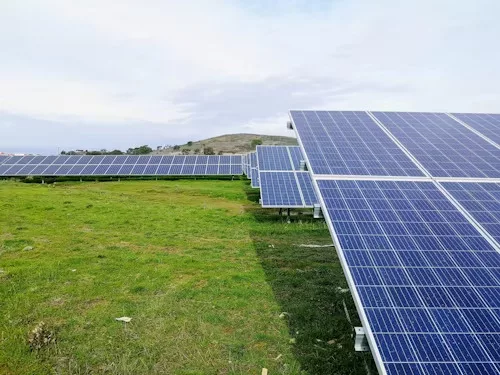The US energy sector is on the cusp of a significant transformation, as revealed by a report from the US Energy Information Agency on February 15, 2024. This year is poised to witness the addition of an impressive 62.8 GW of new utility-scale electricity generating capacity. This expansion reflects a burgeoning trend as the sector swiftly evolves to meet the surging demand for electricity, which is anticipated to potentially triple by 2050 amidst the gradual phase-out of fossil fuels.
Solar and Battery Storage Leading the Charge
2024 is setting up to be a hallmark year for solar energy, with projections indicating the installation of 36.4 GW of new utility-scale solar capacity, marking a considerable 55% increase over the previous year’s figures. Pairing this solar dominance with the planned rise of new battery storage facilities, which themselves are expected to add another 14.3 GW, it becomes evident that these two green technologies alone will constitute over 80% of all the new electricity capacity in the US.
The Epicenter of Solar Expansion
When it comes to solar advancements, three states stand out. Texas, California, and Florida are to collectively host more than half of the new solar installations, with Texas spearheading the movement by contributing an impressive 35% to the overall capacity. Notably, Nevada’s Gemini solar project, with its colossal capacity, is set to become the US’s largest solar plant when it commences operations.
Parallel to the solar boom, the realm of battery storage capacity is also witnessing a renaissance. The expected capacity is set to nearly double this year compared to the previous year. The report highlights the significant role of Texas and California, which together will shoulder the lion’s share of new US battery storage capacity.
Wind Energy Continues to Contribute
Although eclipsed by solar’s exponential growth, wind energy remains a steadfast player in the renewable energy mix. With an additional 8.2 GW of electricity generation capacity from wind turbines slated for 2024, wind energy continues to solidify its place in the energy landscape, with substantial projects like Vineyard Wind 1 and South Fork Wind soon to come online.
A Pivot in Gas-Fired Electricity Generation
Gas-fired electricity generation, once the cornerstone of the energy sector, is pivoting towards a more supportive role, characterized by the increased prevalence of simple-cycle methane gas turbine plants. These plants provide the flexibility necessary to accommodate the variability in electricity production from renewable sources, marking a strategic shift from the traditional base load operations.
Nuclear Energy’s Stagnant Growth
The nuclear sector is experiencing a standstill with the Georgia’s Vogtle nuclear power plant’s fourth reactor being the only noteworthy development. This situation underscores the broader challenges facing nuclear power as a solution for America’s electricity needs, reflecting the high costs and complex regulatory environment that have beleaguered the industry.
Minuscule Growth in Coal Capacity
In stark contrast to the growth of renewable energy capacities, new coal capacity is notably minimal, demonstrating a clear shift in the energy sector’s strategic priorities and marking an almost negligible increase in a landscape dominated by cleaner energy sources.
Concluding Thoughts with a Caveat
While the EIA report delivers a message of optimism for clean electricity in America, we mustn’t overlook the complexities arising from international dependencies. Many solar panels and battery cells destined for the burgeoning US electricity capacity are manufactured in China, raising concerns related to both ethical labor practices and national energy security. As we move toward a renewable energy future, these are concerns that must be addressed with the same vigor applied to the expansion of renewable capacity itself.
